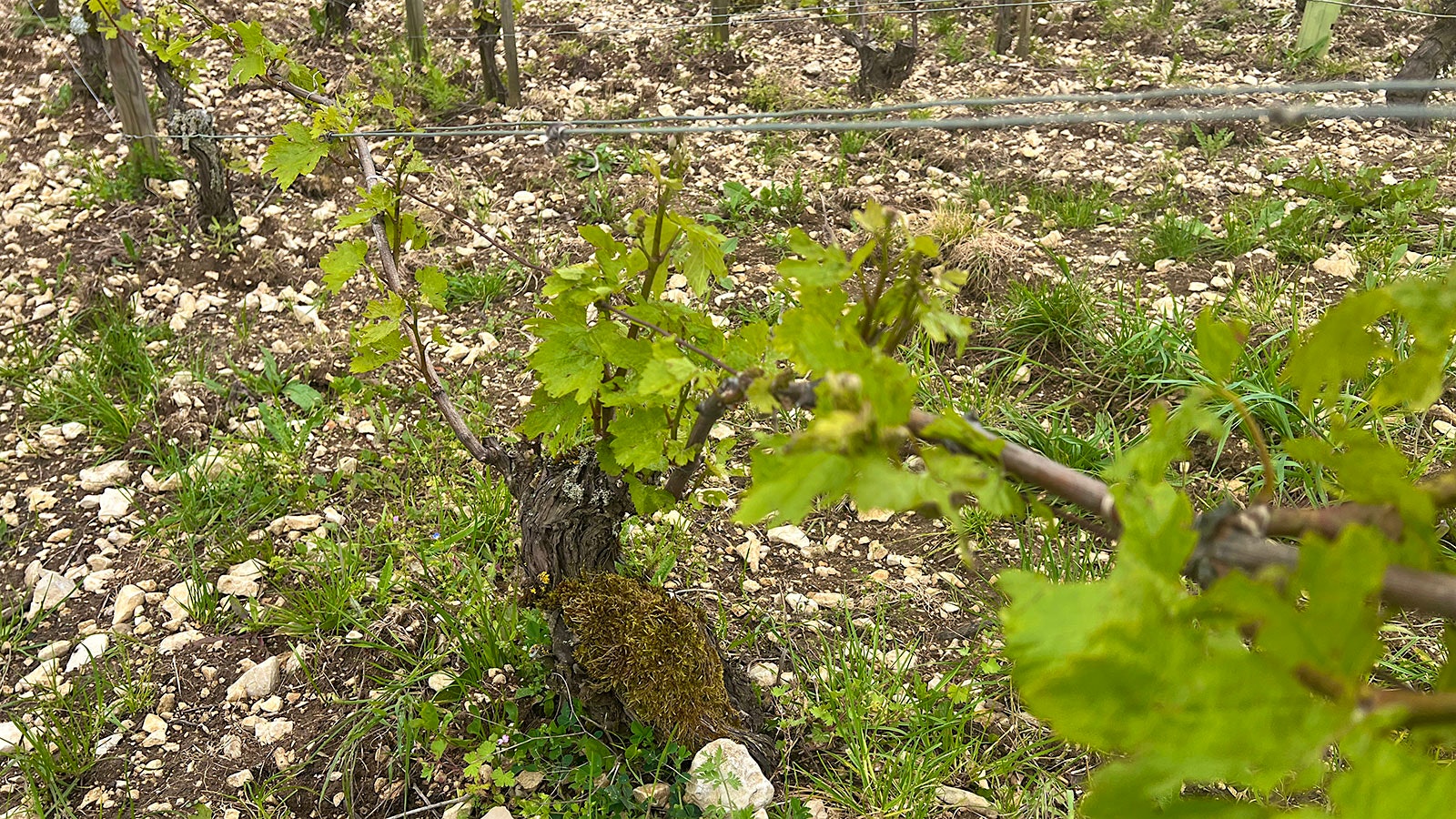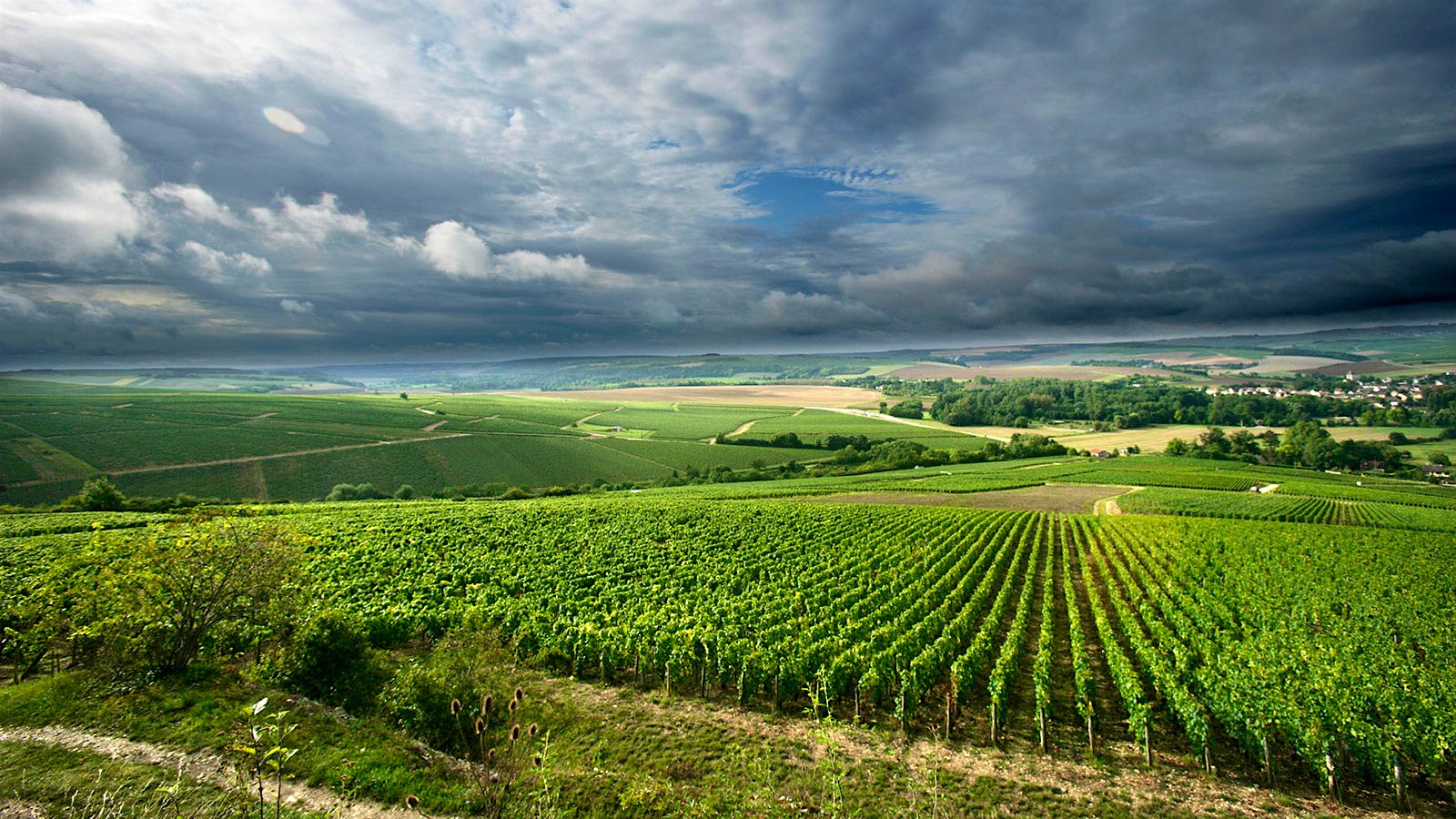In a matter of minutes on the evening of May 1, the 2024 vintage for Chablis was rewritten. A violent storm unleashed pelting hail on vineyards across the northern Burgundy appellation, known for its distinctive white wines made from Chardonnay. Vintners will not know how the vines will recover for several weeks, but the early damage reports are worrying.
Described as a supercell, the storm centered on the villages of Chablis, La Chapelle-Vaupelteigne, Fontenay-près-Chablis, Villy and Maligny. Though it is still early and each parcel will have to be assessed fully by vintners, the impacted vineyards suffered damage estimated at anywhere from 30 percent to 100 percent of potential grapes.
“The hailstorm of the first of May has dramatically affected more or less 20 to 25 percent of the 15,000 acres of the appellation,” explained consulting enologist Grégory Viennois, the former winemaker at Domaine Laroche. “But with the wave of frost that we had the week before and the different episodes of hail that we had here and there since the beginning of the growing season, we can unfortunately expect that, at the end, the loss is [larger].”
Christian Moreau, owner of Domaine Christian Moreau Père & Fils, reported varying damage in different parcels. “At the Domaine we have probably between 20 to 30 percent [damage] in our premier cru Vaillon, while the grand cru Les Clos should be okay,” he told Wine Spectator. “[There was] damage in Valmur, also. But we have to wait a few days to really see the damage. What we need now is some very warm weather, because the vines are under stress because of the cool weather we had for the last two weeks.”


William Fèvre, which owns plots in several premiers and grands crus sites, suffered heavy losses, winemaker Didier Séguier estimates. “The left bank [of the Serein River] was more affected than the right bank, in particular Montmains, Vaillons and Lys. On the right bank, Montée de Tonnerre seems spared, while the grands crus and [premier cru] Vaulorent have a little more damage,” he told Wine Spectator. “Our plots in these sectors were affected. It is still a little early to take stock, but the losses are quite heavy, of the order of 20 to 80 percent, depending on the sector.”
Patrick Piuze noted some minor damage to vineyards he works with in La Chapelle, Fontenay and Vaillons. “I will manage with the two good crops in 2022 and 2023,” he said. “Let’s not forget that we are humble with nature.”
The weather in the next few weeks will be a factor in how the vines respond. The damaged shoots show necrosis, the death of tissues around the damaged cells. Plus, the humidity in the soil combined with the fragility of the vines makes them more vulnerable to mildew.
“It’s indeed too early to see what the effects on the flowering and the final crop will be,” said Viennois. “These stresses—[the frost, hail, rain and cold temperatures]—will have for sure a large impact on the natural physiological development of the vines. We will lose a lot of [flowering buds] that will never become grapes.”
Stay on top of important wine stories with Wine Spectator’s free Breaking News Alerts.
